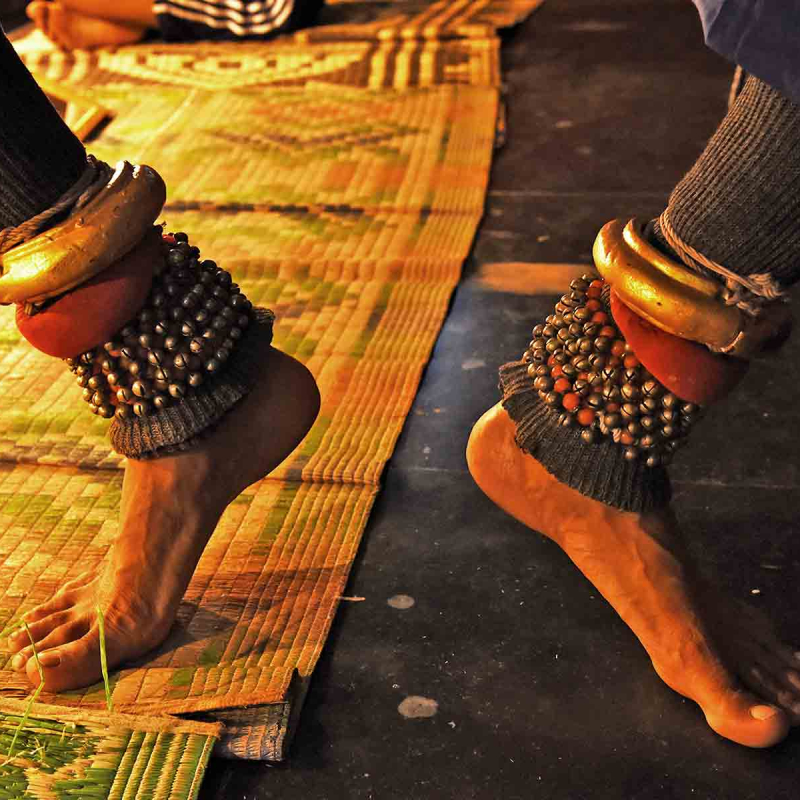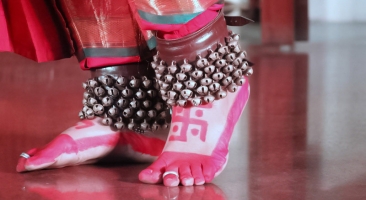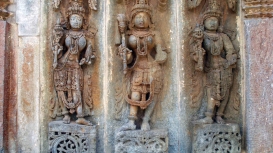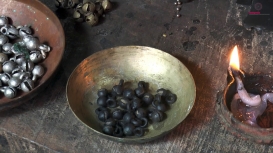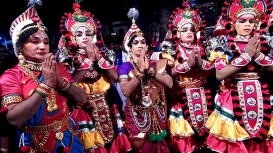The Sanskrit equivalent of ornament is bhooshana; the verb bhoosh means ‘to adorn or decorate with'. Indian classical dances, with the exception of Manipuri, often involve heavy foot work displaying complicated patterns of rhythm. The ghungroos or anklets worn by the dancer, of course, add to the aesthetics of the performance but also carry out a more prominent role in complementing and accentuating his/her foot movements, thus enhancing the appreciation of rhythm. There are innumerable references to the ghungroo and its various versions in ancient Sanskrit literature. Sculptures of gods, goddesses and other celestial beings in temples across India display excellently crafted ghungroos. This module hosts an overview that highlights the position of ghungroos in Sanskrit literature and dance forms, images of Hoysala sculptures wearing exquisitely crafted anklets, a visual documentation of traditional silver anklet-making techniques, another video that documents the ceremonies associated with ghungroo in Yakshgana (a traditional Indian theatre form) and also a textual interview with a mela conductor.

Dr Manorama B.N.
Well-known Yakshagana and Bharatanatyam artiste, author and scholar Dr Manorama runs the bi-monthly dance research journal 'Noopurabhramari'. She has authored several books and is passionately committed to the preservation and propagation of Indian performing art forms.
